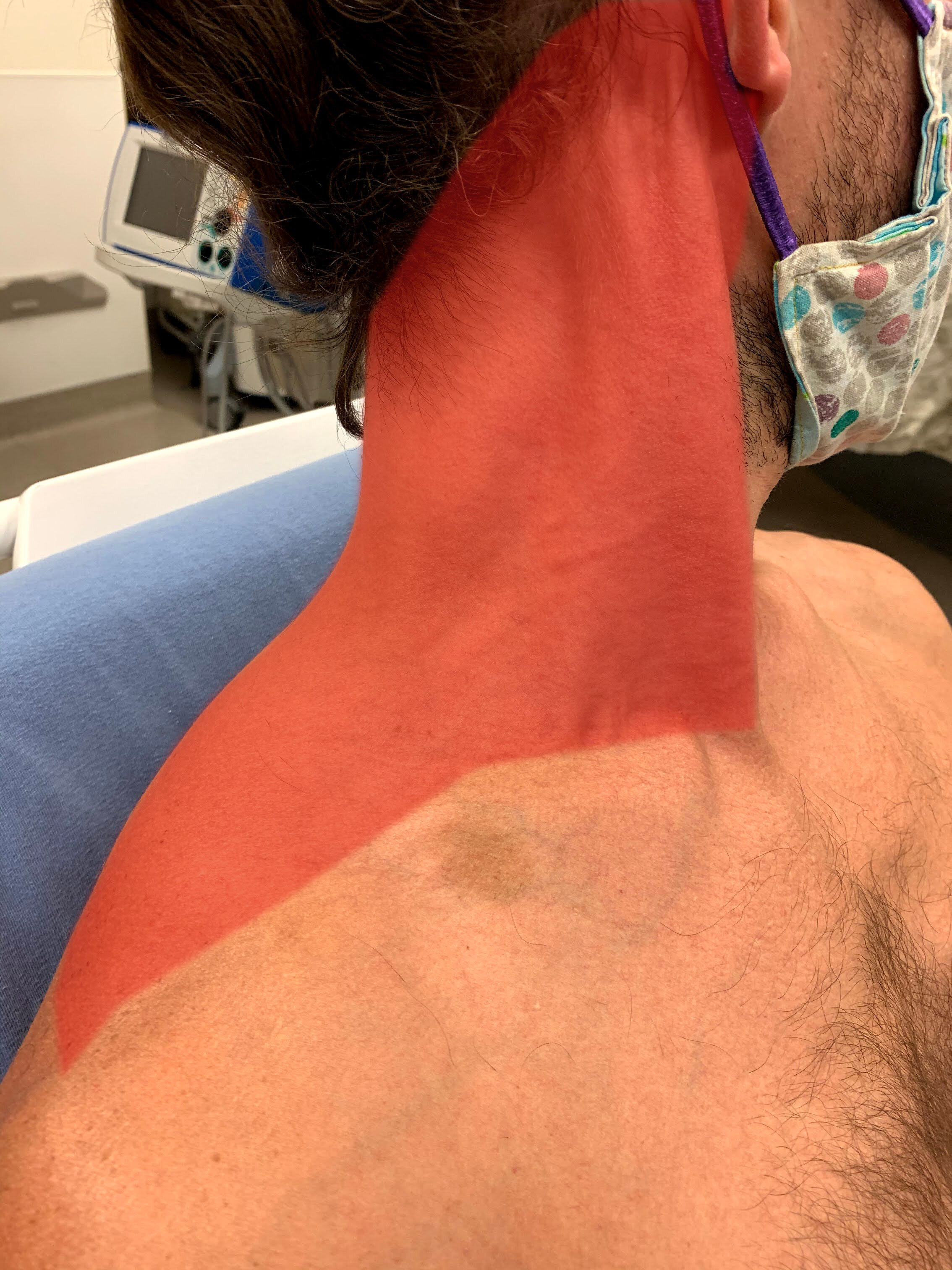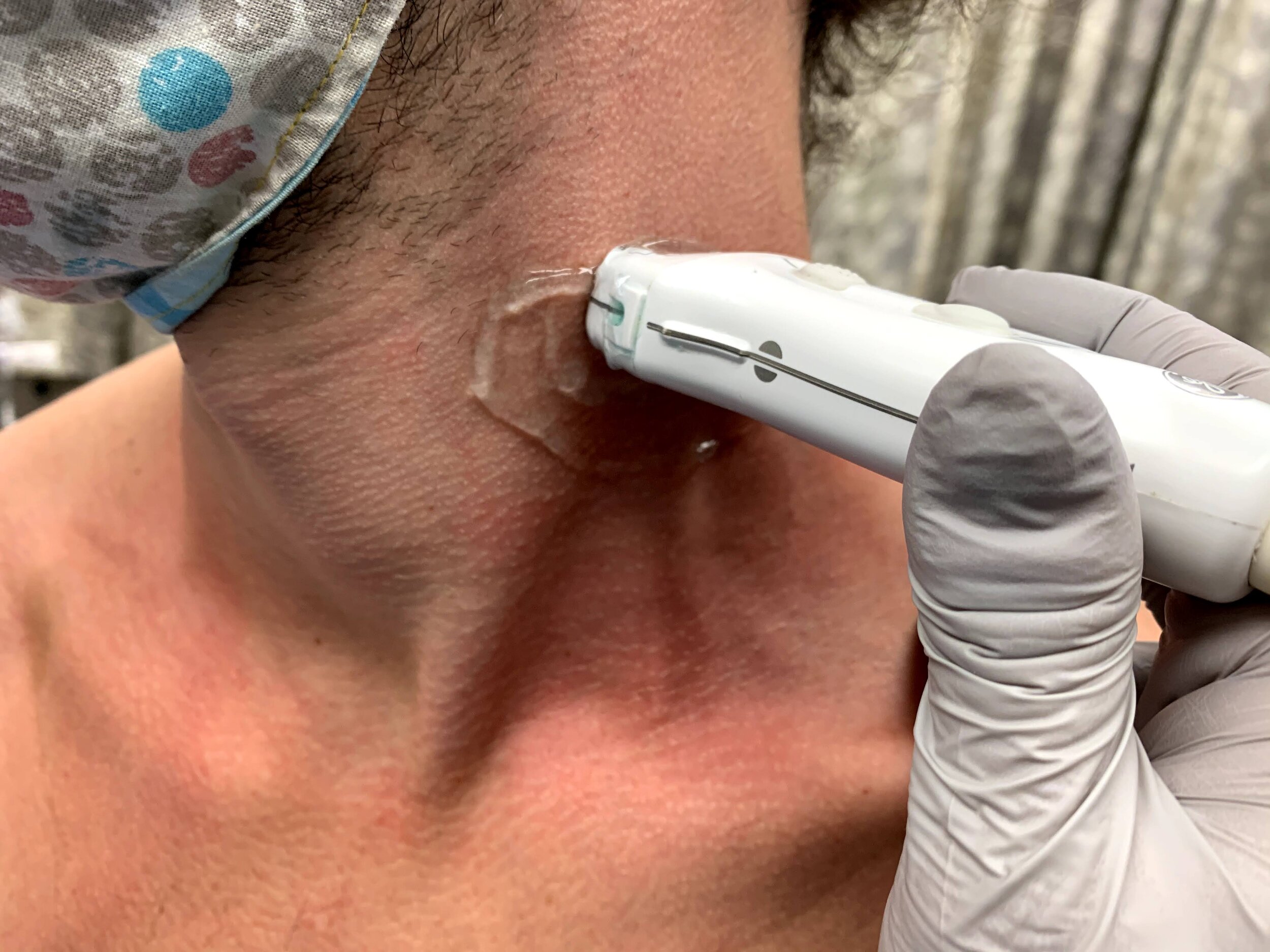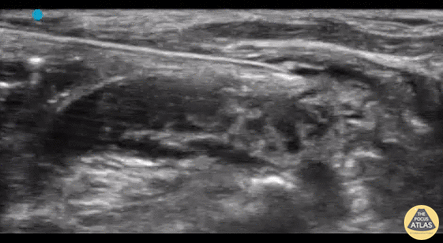Superficial Cervical Plexus Block
Indications: clavicular fractures, Internal Jugular Central Line Placement, abscess I&D or laceration repair of superficial neck, earlobe or auricle lacerations
Considerations & Technical Details
Considerations:
A transient iatrogenic Horner syndrome can occur due to the permeable nature of the investing fascia of the deep cervical fascia. To avoid this, inject less than 5 mL of anesthetic and do not inject deeper than the midpoint of the sternocleidomastoid muscle (SCM).
Transducer: High-frequency linear probe
Needle: 23-27g 1-1.5 in (2.5-3.8 cm) needle
Anesthetic volume: 5 mL
Target of Anesthetic: Anesthetic spread within fascial plane deep to sternocleidomastoid muscle (SCM) and superficial to levator scapulae muscle (LSM)
Positioning and Landmarks:
Position the patient supine with the head turned contralaterally. Place the probe in a transverse orientation on the posterior border of the SCM, midway between the clavicle and mastoid. Identify the carotid artery deep to the internal jugular vein. Superficially to these vessels is the SCM. Inject anesthetic into the fascial plane just deep to SCM. Notably, the cervical plexus will likely not be visualized but planar distribution of anesthetic has been shown to provide a reliable and sufficient block.






